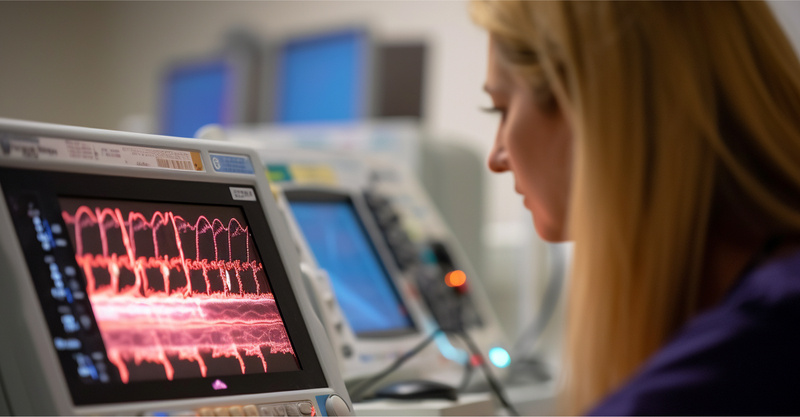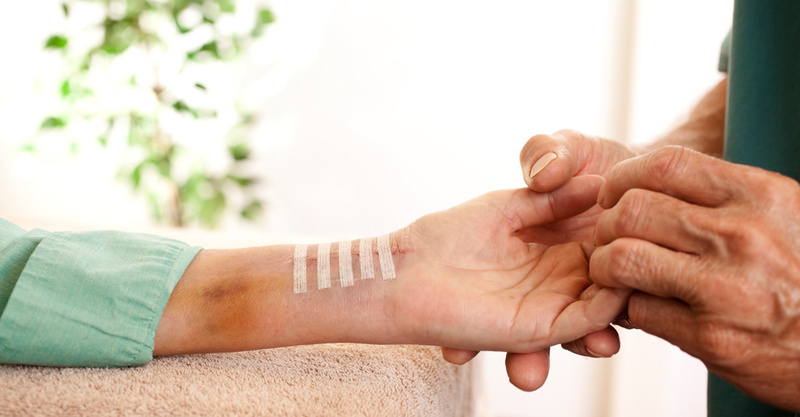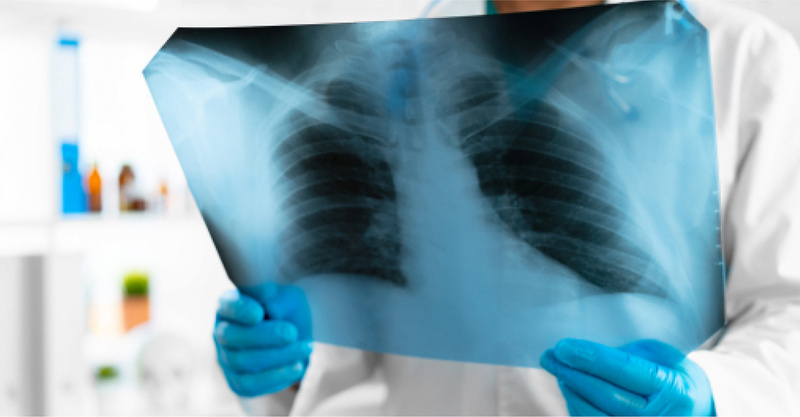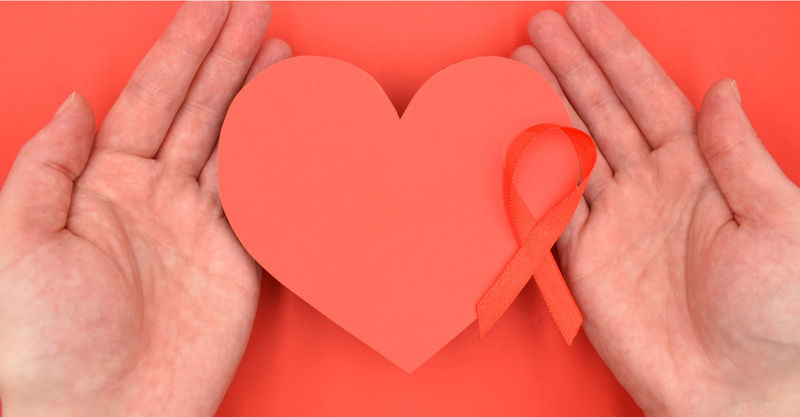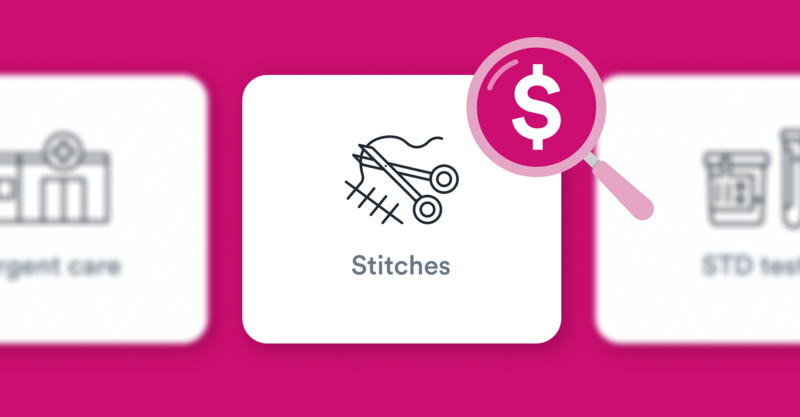Key Points
- Urgent care centers can provide stitches for minor wounds, but not all centers offer this service.
- Stitches are used to close deep, long, or jagged wounds to promote proper healing and reduce infection risk.
- When getting stitches at urgent care, expect examination, wound cleaning, anesthesia administration, stitching, and aftercare instructions.
- Some wounds may require emergency care instead of urgent care, depending on their severity and symptoms.
Urgent care clinics are designed to provide medical treatment for non-life-threatening injuries and illnesses that require prompt attention. Most urgent care centers have on-site medical professionals who are trained to provide stitches for simple lacerations (cuts). This means you can often get the care you need without having to wait during a visit to an emergency room.
It is important, however, to note that not all urgent care centers offer stitching services. Before you go, it's a good idea to call ahead and ask if they provide this type of treatment. In some cases, the staff may advise you to go to a different urgent care or emergency room instead.
What are Stitches?
Stitches (also known as sutures) are medical threads used to close a wound or incision. They are used to bring the edges of a wound together, allowing it to heal properly and reduce the risk of infection and scarring. There are other options for closing a wound or incision, such as staples, surgical glue, and steri- strips. Each has its pros and cons, and your healthcare provider will decide which option is best for you in your situation.
Typically, stitches are made of non-toxic materials such as nylon, silk, or polypropylene, reports Kaiser Permanente.
Types of Wounds that Require Stitches
Stitches are commonly used to close wounds that are deep, long, or have jagged edges, according to Kaiser Permanente. Some examples of wounds that may require stitches include:
- Lacerations (cuts)
- Avulsions (where a piece of skin or tissue is torn back)
- Surgical incisions
It's important to note that not all wounds require stitches. For example, minor cuts, puncture wounds, or scrapes can often be treated with a simple adhesive bandage. Sometimes contaminated wounds are not repaired due to increased risk of infection.
What is Urgent Care?
When you have a medical issue that requires prompt attention but is not life-threatening, urgent care can be an excellent option. They are designed to provide convenient and cost-effective medical care to patients who cannot wait for an appointment with their primary care physician and want to avoid a costly visit to the emergency room.
Urgent care centers are staffed by medical professionals, including physicians, nurse practitioners, medical assistants, radiology technologists, and physician assistants. They offer walk-in medical care for a variety of conditions, including:
- Minor injuries such as cuts, sprains, and simple fractures
- Minor illnesses such as colds, flu, and infections
- Minor burns and rashes
- Allergies and asthma
- Headaches and migraines
- Minor eye injuries and infections
- Urinary tract infections
- Ear infections
- STD testing and treatment
Services Offered in Urgent Care Centers
Urgent care centers offer a wide range of medical services, including:
- Diagnosis and treatment of non-life-threatening medical conditions
- X-rays
- Lab tests, including urinalysis and blood work
- Minor surgical procedures such as abscess draining or stitches
- IV fluids and medications
- Vaccinations and immunizations
- Occupational health services such as drug testing and physical exams
- STD testing and treatment
Can Urgent Care Do Stitches?
In many cases, urgent care can provide stitches for minor wounds. However, there are factors that determine if urgent care can do stitches and which types of wounds can be treated with stitches in urgent care.
Factors that Determine if Urgent Care Can Do Stitches
The decision to provide stitches at urgent care depends on several factors, including the size, depth, and location of the wound. If the wound is too deep or located in a sensitive area, you may need to be referred to a hospital for treatment. Additionally, if the wound has been open for too long, or is too contaminated, it may be too late for stitches and require other forms of treatment.
Examples of Wounds That Can Be Treated With Stitches in Urgent Care
Urgent care can provide stitches for a variety of minor wounds, including cuts, lacerations, and puncture wounds. However, not all wounds require stitches. Some wounds may be too small or shallow to require stitches and can be treated with simple first aid instead. Conversely, some cuts or lacerations can be too severe to be treated in urgent care.
Here are some types of wounds that can typically be treated with stitches in urgent care, according to Kaiser Permanente:
- Cuts that are longer than 1/4 inch
- Cuts that are deep enough to expose fatty tissue or muscle
- Complex lacerations
The Benefits of Getting Stitches at Urgent Care
One of the biggest benefits of getting stitches at urgent care is convenience. Urgent care centers are typically open later than primary care physician offices and often offer walk-in appointments. This means that you can receive the care you need without having to wait for an appointment or take time off work.
Another benefit of getting stitches at urgent care is that it can be much more cost-effective than going to the emergency room. Urgent care centers often have lower co-pays and fees than emergency rooms, which can help you save money on your medical bills.
In addition to being more cost-effective, urgent care centers often have shorter wait times than emergency rooms. This means that you can receive the care you need more quickly, which can be especially important if you have a deep cut or laceration that requires prompt attention.
What to Expect When Getting Stitches at Urgent Care
When you have a laceration that requires stitches, you may wonder what to expect when you visit an urgent care center. Here is a breakdown of the process:
Examination of the Wound
The first thing your urgent care provider will do is examine the wound to determine if it requires stitches. They will assess the depth, size, and location of the laceration, and decide the best course of action. Most likely your wounds will be cleaned. If the wound is too severe, they may refer you to the emergency room. Characteristics of wounds that may be considered severe, according to the NLM are:
- Wounds exposing deep tissue or wide contaminated wounds
- Wounds with damage to surrounding tissues, blood vessels, or nerves
- Wounds with continued bleeding despite efforts to control it, or arterial wounds
Cleaning and Preparation of the Wound
The urgent care provider will clean the wound thoroughly to remove any debris, dirt, or bacteria. They may use a saline solution or an antiseptic solution to disinfect the area. After cleaning, they may prepare the wound for stitching by trimming any loose skin or tissue, according to the NLM.
Administration of Anesthesia
To minimize pain during the procedure, the urgent care provider may administer a local anesthetic to the area around the wound, according to the NLM. This will numb the area and make the stitching process more comfortable. A common medication used for local anesthesia is lidocaine, according to the NLM.
Stitching of the Wound
Once your wound is numb, the urgent care provider will stitch it up using a special thread and needle. They will carefully align the edges of the wound and use a specific stitching technique to promote healing and minimize scarring, according to the NLM.
Aftercare Instructions
After the stitching process is complete, your urgent care provider will give you detailed aftercare instructions. They will advise you on how to care for the wound, how to keep it clean and dry, and when to return for a follow-up visit. Usually, you will have a follow-up appointment to remove your stitches in around 1 to 2 weeks, according to the NLM. Some stitches, however, are dissolvable and will dissolve on their own in the same time frame.
How to Care for Stitches After They Are Administered
To care for your stitches, the NLM recommends keeping the area clean and dry, avoiding strenuous activity, and avoiding soaking the wound in water. You should also avoid touching the stitches or picking at them, as this can delay healing and increase the risk of infection according to the NLM.
Risks and Complications Associated with Getting Stitches
While getting stitches is generally a safe and effective procedure, there are some risks and complications associated with it. According to Kaiser Permanente, these risks include:
- Infection
- Bleeding
- Scarring
- Allergic reactions to anesthesia or the materials used for stitching
When to Go to the Emergency Room Instead of Urgent Care
If you have a wound that is deep, bleeding heavily, or appears very contaminated, you may require emergency care instead of urgent care, according to the NLM. Here are some types of wounds that require emergency care:
Types of Wounds That May Require Emergency Care
- Wounds that are deep or long
- Wounds that are gaping open and won't close
- Wounds that are bleeding heavily and won't stop
- Wounds that have an object stuck in them, such as a knife or glass
Signs and Symptoms That Indicate the Need for Emergency Care
In addition to the type of wound, there are some signs and symptoms that indicate the need for emergency care. If you experience any of the following, the NLM recommends considering emergency room care rather than urgent care:
- Severe pain that doesn't improve with pain medication
- Numbness or tingling around the wound
- Loss of sensation or movement in the affected area
- Inability to move the affected area
- Signs of infection, such as redness, warmth, or pus
Differences Between Urgent Care and the Emergency Room
It's important to understand the differences between urgent care and emergency care so that you can make an informed decision about the kind of care you need.
Urgent care centers are designed to treat non-life-threatening conditions, such as minor injuries and common illnesses. Emergency rooms, on the other hand, are equipped to handle serious medical emergencies—such as heart attacks and strokes, according to the American Board of Urgent Care Medicine (ABUCM).
If you're unsure whether your wound requires emergency care, it's best to err on the side of caution and go to the emergency room, notes the NLM. They can evaluate your wound and determine the best course of treatment.
Insurance Coverage for Urgent Care Services
In most cases, urgent care services are typically covered by insurance plans, but the amount of coverage can vary depending on your plan, according to HealthPartners.com. Most insurance plans have a co-pay for urgent care visits, which means you'll be responsible for paying a portion of the cost at the time of service. Some plans may also have a deductible that you'll need to meet before your insurance kicks in.
If you have a high-deductible health plan, you may be responsible for paying the full cost of the visit until you meet your deductible. Some plans, however, may offer discounted rates for urgent care services—even if you haven't met your deductible.
It's important to note that not all urgent care services are covered by insurance.
Some services, such as cosmetic procedures or elective surgeries, may not be covered. It's always a good idea to check with your insurance provider to see what services are covered and what your out-of-pocket costs will be.
How to Check if Your Insurance Covers Urgent Care
Before you visit an urgent care center, it's a good idea to check with your insurance provider to see what your coverage is. You can usually find this information on your insurance provider's website or by calling their customer service number.
When you contact your insurance provider, be sure to ask:
- What is the co-pay for urgent care visits?
- Is there a deductible for urgent care visits?
- Are there any services that are not covered by my plan?
- Are there any urgent care centers that are in-network?
By understanding your insurance coverage for urgent care services, you can avoid unexpected costs and make informed decisions about your healthcare.
Availability of Urgent Care Centers in Different Locations
In densely populated areas, you may find multiple urgent care centers within a few miles of each other, while in more rural areas, there may only be one or two centers within a larger radius.
The availability of urgent care centers also depends on the time of day or day of the week. Some centers may have limited hours on weekends or holidays, while others may be open 24/7.
How to Find an Urgent Care Center Near You
The easiest way to find an urgent care near you is to use Solv. You can even use the Solv Health app to search for urgent care when you’re on the go.
You can also call your insurance company to find out which urgent care clinics are included in your plan network.
Qualifications of Urgent Care Providers
When you go to an urgent care center for stitches, you can expect to receive treatment from a licensed medical professional. Urgent care providers are typically medical doctors (MDs), certified physician assistants (PAs), or nurse practitioners (NPs) who have received specialized training in wound care and suturing techniques.
Physician assistants and nurse practitioners are licensed healthcare professionals who typically work under the supervision of a physician, according to PhysicianAssistantEDU.org. They are trained to diagnose and treat a wide range of medical conditions, including injuries that require stitches. In addition to their general medical education, PAs and NPs who administer stitches have received additional training to develop the knowledge and skills needed to properly clean and close wounds.
Choosing a Qualified Provider
Choosing a qualified provider to administer your stitches is important to ensure you receive the best possible care. A qualified provider will have the knowledge and skills needed to properly assess your wound and determine the best course of treatment. They will also have the experience needed to properly clean and close your wound to minimize scarring and promote healing, according to Medline Plus.
Getting Stitches at Urgent Care
Urgent care clinics are equipped with the necessary medical supplies and staff to provide quick and efficient treatment for minor injuries—including stitching minor lacerations. Urgent care clinics are also open after hours and on weekends, making it a convenient option for those who cannot wait for an appointment with their primary care physician.
In order to heal properly and reduce the risk of infection, it is important to seek medical attention as soon as possible for cuts that may require stitches, notes Medline Plus. Small and medium sized cuts can usually be stitched by an urgent care provider—however, if you are experiencing severe bleeding you should call 911 or go to the nearest emergency room.
When choosing an urgent care center for stitches, it is important to choose a reputable facility with experienced medical staff. You can use Solv to find urgent care clinics near you and also view provider ratings.
Frequently asked questions
What are stitches and when are they used?
Stitches, also known as sutures, are medical threads used to close a wound or incision. They are used to bring the edges of a wound together, allowing it to heal properly and reduce the risk of infection and scarring. Stitches are commonly used to close wounds that are deep, long, or have jagged edges, such as lacerations (cuts), avulsions (where a piece of skin or tissue is torn back), and surgical incisions.Can all urgent care centers provide stitches?
No, not all urgent care centers offer stitching services. It's a good idea to call ahead and ask if they provide this type of treatment. If they do not, the staff may advise you to go to a different urgent care or emergency room instead.What are the benefits of getting stitches at an urgent care center?
One of the biggest benefits of getting stitches at urgent care is convenience. Urgent care centers are typically open later than primary care physician offices and often offer walk-in appointments. This means that you can receive the care you need without having to wait for an appointment or take time off work. Urgent care centers often have lower co-pays and fees than emergency rooms, which can help you save money on your medical bills. They also often have shorter wait times than emergency rooms.What should I expect when getting stitches at an urgent care center?
When you visit an urgent care center for stitches, the provider will first examine the wound to determine if it requires stitches. They will then clean the wound thoroughly, possibly administer a local anesthetic to minimize pain, and then stitch the wound. After the stitching process is complete, your urgent care provider will give you detailed aftercare instructions.How do I take care of my stitches after they are administered?
To care for your stitches, you should keep the area clean and dry, avoid strenuous activity, avoid soaking the wound in water, and avoid touching the stitches or picking at them, as this can delay healing and increase the risk of infection.When should I go to the emergency room instead of urgent care for a wound?
If you have a wound that is deep, bleeding heavily, or appears very contaminated, you may require emergency care instead of urgent care. Other signs and symptoms that indicate the need for emergency care include severe pain that doesn't improve with pain medication, numbness or tingling around the wound, loss of sensation or movement in the affected area, inability to move the affected area, and signs of infection, such as redness, warmth, or pus.Is getting stitches at an urgent care center covered by insurance?
In most cases, urgent care services, including stitches, are typically covered by insurance plans, but the amount of coverage can vary depending on your plan. Most insurance plans have a co-pay for urgent care visits, which means you'll be responsible for paying a portion of the cost at the time of service. Some plans may also have a deductible that you'll need to meet before your insurance kicks in. It's always a good idea to check with your insurance provider to see what services are covered and what your out-of-pocket costs
Solv has strict sourcing guidelines and relies on peer-reviewed studies, academic research institutions, and medical associations. We avoid using tertiary references.

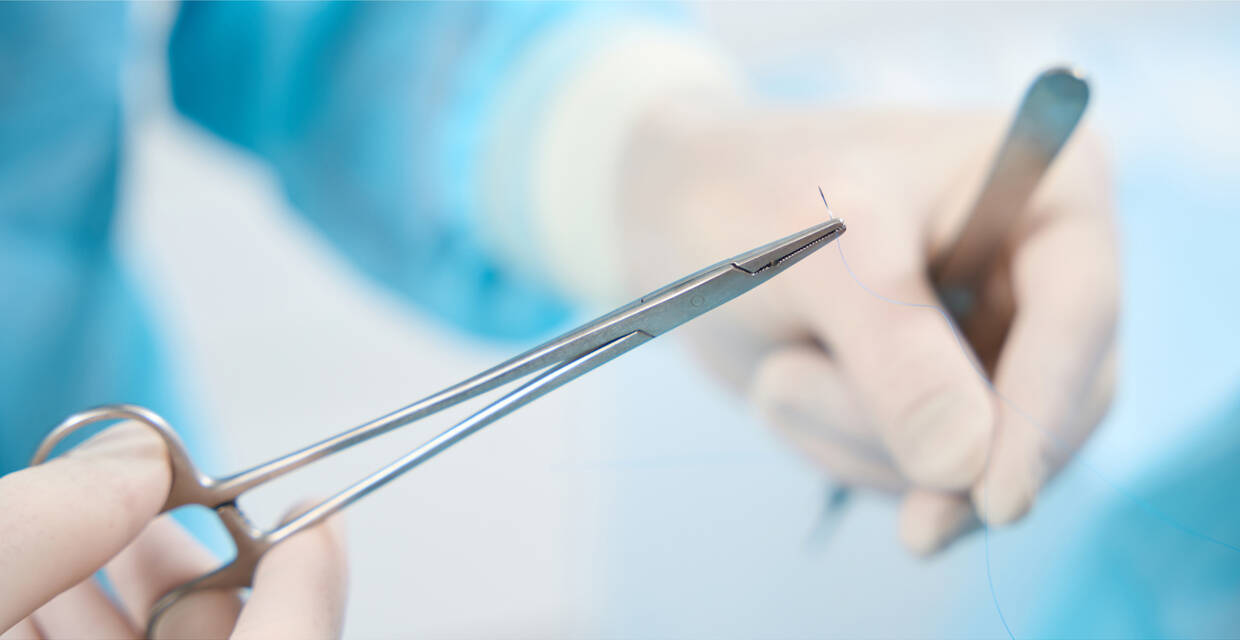
 LinkedIn
LinkedIn




